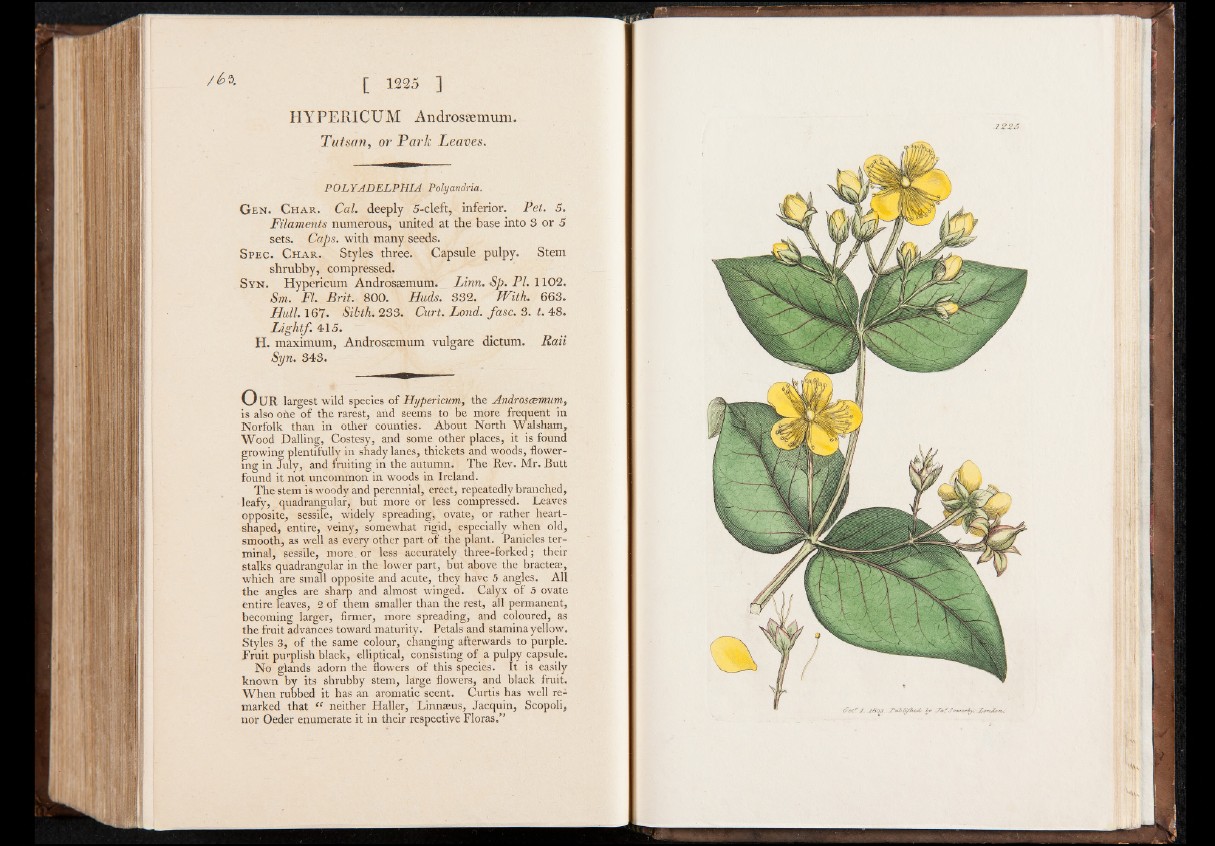
HYPERICUM Androsaemum.
Tutsan, or Park Leaves.
POLYADELPHIA Polyandria.
G e n . Char. Cal. deeply 5-cleft, inferior. Pet. 5.
Filaments numerous, united at the base into 3 or 5
sets. Caps, with many seeds.
S p e c . C h a r . Styles three. Capsule pulpy. Stem
shrubby, compressed.
Syn. Hypericum Androssemum. Linn. Sp. PI. 1102.
Sm. FI. Brit. 800. Huds. 332. With. 663.
Hull. 167. Sibth. 233. Curt. Loud. fasc. 3. t. 48.
Lightf. 415.
H. maximum, Androssemum vulgare dictum. Raii
Syn. 343.
O u r largest wild species of Hypericum, the Androsaemum,
is also one of the rarest, and seems to be more frequent in
Norfolk than in other counties. About North Walsham,
Wood Dalling, Costesy, and some other places, it is found
growing plentifully in shady lanes, thickets and woods, flowering
in July, and fruiting in the autumn. The Rev. Mr. Butt
found it not uncommon in woods in Ireland.
T h e stem is woody and perennial, erect, repeatedly branched,
leafy, quadrangular, but more or less compressed. Leaves
opposite, sessile, widely spreading, ovate, or rather heart-
shaped, entire, veiny, somewhat rigid, especially when old,
smooth, as well as every other part of the plant. Panicles terminal,
sessile, more, or less accurately three-forked; their
stalks quadrangular in the lower part, but above the bracteae,
which are small opposite and acute, they have 5 angles. All
the angles are sharp and almost winged. Calyx of 5 ovate
entire leaves, 2 of them smaller than the rest, all permanent,
becoming larger, firmer, more spreading, and coloured, as
the fruit advances toward maturity. Petals and stamina yellow.
Styles 3, of the same colour, changing afterwards to purple.
Fruit purplish black, elliptical, consisting of a pulpy capsule.
No glands adorn the flowers of this species. It is easily
known by its shrubby stem, large flowers, and black fruit.
When rubbed it has an aromatic scent. Curtis has well remarked
that “ neither Haller, Linnaeus, Jacquin, Scopoli,
nor Oeder enumerate it in their respective Floras.”
12ZS
(PctP2 . Jt8o3. JPkA 'P /7‘^ 2 ' i r papSotvej'^y. AcrnAons.